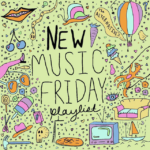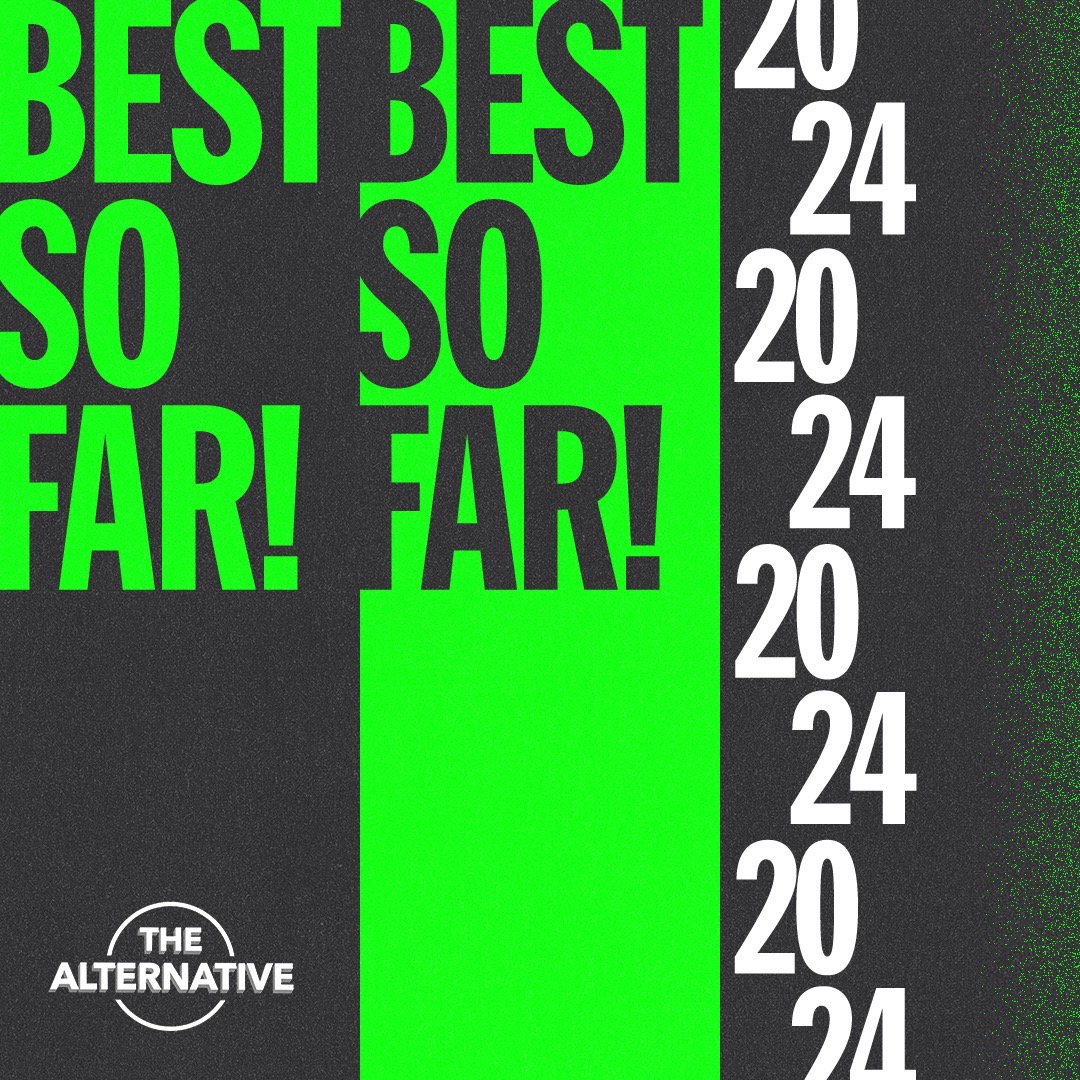Gig Review: Future Islands with Open Mike Eagle
Posted: by The Alt Editing Staff
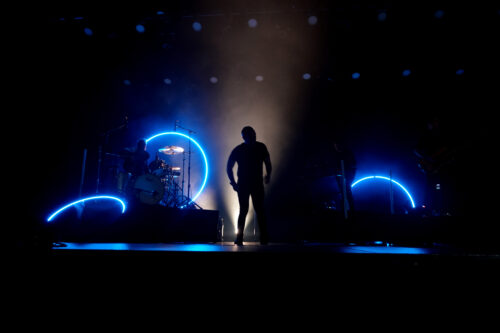
In May, I was driving to Des Moines with my friend Malina. We were going to see Open Mike Eagle and Future Islands. In the background–and honestly the foreground as I anxiously rambled–everything was falling down. I was cut from my radio job I loved, even after I did everything to the best it could’ve been done. It felt like a part of me was rejected.
Just as everything ends, everything begins, everything leaves, everything stays. That change is always felt, whether it takes weeks or hours to manifest. It aches in your limbs when the bones begin to stretch, or in the sudden shock when you turn the corner to a vacant lot that was full and familiar the last time you stepped foot there.
It’s a theme that gnaws at both artists. Since 2016’s Brick Body Kids Still Daydream, Open Mike Eagle has primarily ruminated on the past: how old homes have been turned to rubble, how decades long relationships have shattered, and how all the once new and magical components eventually are coated in dust. On his Morning Show, which he livestreams on Twitch, he talks with his audience about old rap groups coming and going, or his own personal experiences as a different contextual perspective to whatever hip hop debate is happening that week.
Open Mike Eagle is an artist that has tinged about a quarter of my life. I remember listening to him right before I fucked up my ACT driving to school on a dreary day, in the shadow of a looming pandemic. The second article I ever published was a weakly-written review of his 2022 album Component System with the Auto Reverse. His very playful style and sound that still carries a lot of the nostalgic hipster tendencies from his early work has always felt comforting. Malina said that listening to Open Mike and his collaborators like Sammus was very eye-opening to her, having grown up in a fully suburban town in the middle of Iowa. His voice has been there for the entirety of our adulthood.

We met Malina’s friend Jorden near the venue at the large sculpture park where signs exclaiming “do not touch” obscured all the pieces. We lay on the grass as we waited for the show to start, bathing in the moment. When we walked up to the venue, it was a little jarring. It was at Hoyt Sherman Place, which looked like a country club that sat atop a pristine lawn that rolled down a hill. Inside the regal theatre were ornamental decorations creeping up the wall and across the dome above, half-tuxedoed ushers, and classical paintings in the halls. It was far off from taped-together DIY venues where I first saw videos of Future Islands. Open Mike Eagle described it as “Not your usual place to have a rap show.”
During his set, Eagle stood at the front of the stage, looking down at the people sitting in rows in front of him. The songs in the set ranged from across his discography. He played his beats from a laptop and sample pad that sat in front of him on a tower of audio equipment while he rapped over them. Initially, it felt like a major divide, an established hierarchy that didn’t feel fitting for him. Throughout his quick set though, Open Mike broke down that separation, talking with the crowd and telling anecdotes about his walk downtown earlier in the day, like how he found a fish dried up on a bridge, seemingly using its entire might to strand itself. His approachability and openness lowered the stage to the audience’s level. He didn’t feel like limited god, but just another person on everyone else’s level, exchanging stories on a face-to-face level.
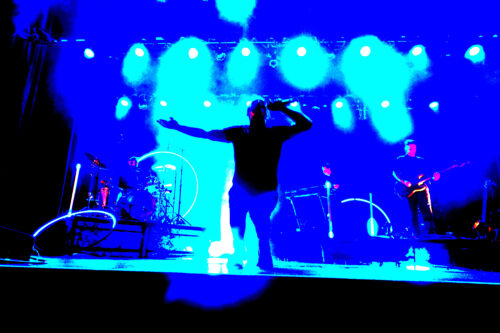
Future Islands opened their set blanketed in darkness across the stage. Gradually it began to lighten as faint synth whispers echoed louder through the hall and the energy of the rhythm section built. In the dark behind each member of the band, vertical halos began to glow in bright neons, backlighting the figure’s silhouettes. Eventually, “King of Sweden” burst outwards with streaks of light rupturing outward through the air. It accompanied the pulsing syncopated drum shuffles and entrenched palpitating bass grooves locking in unity with each other. The transuding, ebbing synths hung above it all, completing the sound of Future Islands suspended grooves.
The set spanned across the Future Islands’ discography, but the band focused on playing songs from their most recent album People Who Aren’t There Anymore, lingering on all the once familiar faces that have faded from the surfaces of memory. Throughout all this, frontman Samuel T. Herring moved vigorously throughout, crooning like a warlock. He lunged across the stage and gleamed down at the audience with eyes blazing in his gaze. He would kick and writhe about, sliding across the stage on his stomach, and doing his signature move where he shoved his fist into his mouth.
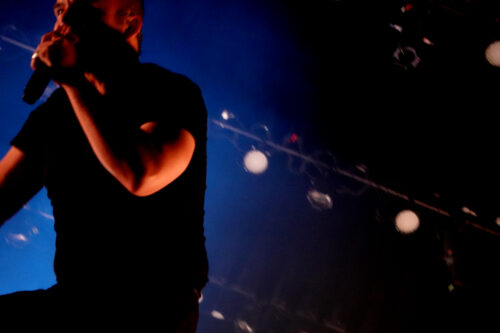
I watched most of it from above, sitting with my friends. We were in awe that he could keep it up for two hours straight, slowly becoming more drenched with sweat. It felt like it went against any rule of entropy. Herring has been doing this for nearly two decades straight, looking basically the same since 2012. It feels shocking that the act hasn’t broken down yet. Instead, it looks neater and more organized from the time when they stacked everything on the stages of DIY spaces. In front of the clean lighting fixtures and designated raised platforms that come from growing and signing with major indie labels, Herring has even more freedom to embed chaos while performing.
The band came back for an encore. The instruments started lulling into the song “Little Dreamer,” the last track from their first album Wave Like Home. Herring shifted from his usual preface about how the relationship this song was about failed not too long after the record was released and how it was once a happy song but now it’s a sad song. He told the story about the girl, how they got close but then fell apart, and how performing this song would be anguishing for him. But now, he looks back on it in a more saccharine way. Instead of tearing himself apart about how it was all gone, he cherishes that that time existed and can be happy that it lives on forever in memory even if it ended painfully.
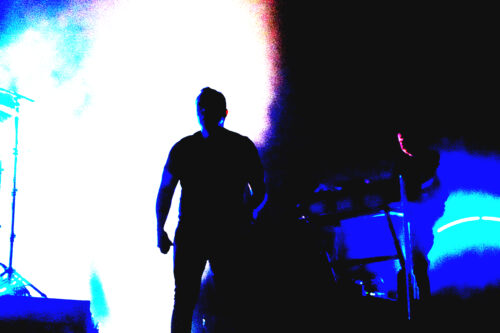
That was clearing in that moment. I’m still not really over getting laid off and how people who I trusted and cared about treated me with impunity, but I don’t scorch away the memories it gave me. There were a lot of happy cherished memories that I had from working with my friends at that radio station. There were a lot of cool memories and opportunities that I got from what I did there. There’s even some sort of value in getting laid off itself. I learned how it made me feel, and I will do everything I can to make sure others don’t feel the way I did in the future. These might not be as beautiful as realizations as Herring’s just because of the negative nature of it all, but they’re still valuable. There’s still a lot to be happy about it.
After “Little Dreamer” Future Islands continued their encore. When they played the three songs they had planned, Herring said, “One more,” and after that song he said, “One more.” They played ever more emphatically, even when the house lights went on encouraging them to stop, washing out the neoteric moody atmosphere the band created with their lights and exposing the brick walls behind them. I danced along throughout the curfew breaking encore with Malina and Jorden, even though we knew the moment would soon end; it was still cherished, and it would still linger.
––
John Glab | @glabglabglab_
The Alternative is 100% supported by our readers. If you’d like to help us write about more great music and keep our site going, you can become a Patron on Patreon, which also allows you to receive extra content, sweet perks, and The Alternative merch, with levels starting at only $2 per month. Everything helps, and if you can’t afford to donate, consider sharing this article and spreading the word about our site! And if you want The Alternative delivered straight to your inbox every month, sign up for our free newsletter. Either way, thanks for reading!



